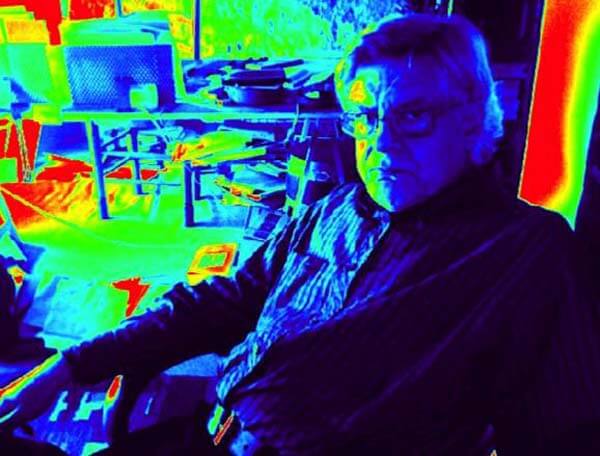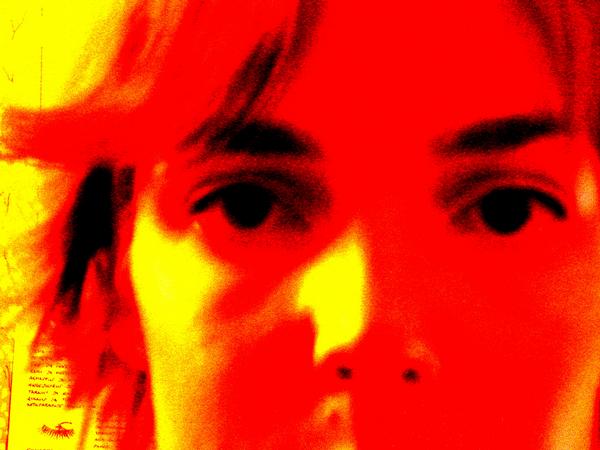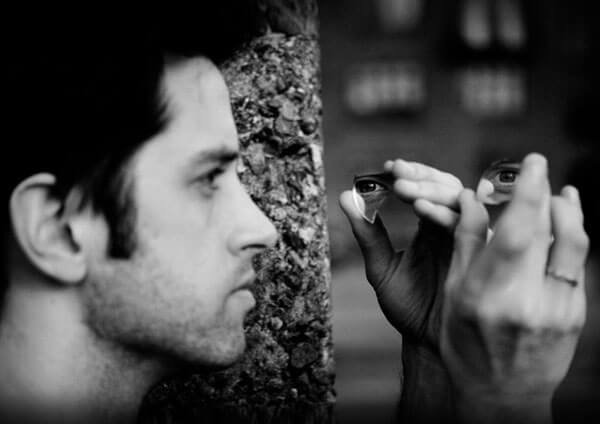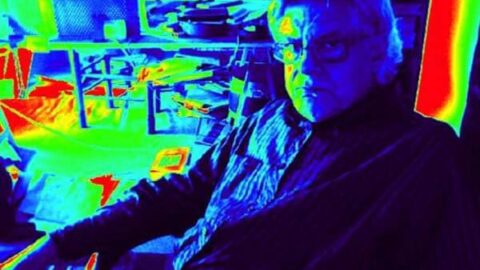 The concept of combining visual and auditory elements to build a musical composition was highlighted at the 2013 IMPULS Festival in Graz, Austria. Several concerts and workshops during the February 9-20, 2013 festival featured works in this vein from composers Georges Aperghis, Thierry de Mey, Liis Viira, Simon Steen-Anderson, and others. Of the many examples of incorporating visual components into a musical performance during the festival, the strongest were those which treated these visual elements with the same compositional tools composers use with sound. Motific development, counterpoint, augmentation and diminution, intuitive phrasing, and rhythmic repetition all came across strongly when applied to visual elements in a musical setting.
The concept of combining visual and auditory elements to build a musical composition was highlighted at the 2013 IMPULS Festival in Graz, Austria. Several concerts and workshops during the February 9-20, 2013 festival featured works in this vein from composers Georges Aperghis, Thierry de Mey, Liis Viira, Simon Steen-Anderson, and others. Of the many examples of incorporating visual components into a musical performance during the festival, the strongest were those which treated these visual elements with the same compositional tools composers use with sound. Motific development, counterpoint, augmentation and diminution, intuitive phrasing, and rhythmic repetition all came across strongly when applied to visual elements in a musical setting.

On Sunday, February 17, a group of six percussionists performed an excellent, modified version of Les Guetteurs du Sons (The Observers of Sound) (1981) in a workshop concert. In his score notes, Aperghis describes the character attributes for each performer. Written for three percussionists, this piece turns the musicians into actors, notating their movements, facial expressions and vocalizations. Although thrusting performance art into musical performance was by no means unheard-of in the second half of the twentieth-century (Mauricio Kagel’s Dressur (1977) is mentioned in the notes to Les Guetteurs), Aperghis’ take on the idea explores the boundaries of formal restraints provided by a traditional concert setting. There is something deeply pleasing, formal and ritualistic about the deliberate and patterned physical movements of the first sequence of Les Guetteurs. The percussionists are seated in a row, facing the audience with hard, blank stares behind a kit of floor tom and bass drum. They begin a sequence comprised of lifting an arm robotically to the position of an oath-taker, and then slowly, mechanically, lowering it to the floor tom, sometimes hitting the drum, and sometimes only imitating the gesture used to produce sound. The sequence of arm lifts, hitting and not hitting drums, and head movements in an irregular pattern is satisfying to behold, and demonstrates that motific development need not be purely audible.
Having worked with Aperghis for a week leading up to this concert, seven percussionists then performed six new works-in-progress, inspired by Aperghis. The composer-participants of this workshop produced an interesting spectrum of possibilities linked to the basic materials of Les Guetteurs. Many successfully emulated the concept of repeated, irregular sequences of movement and sound, while others worked with the fascinating idea of counterpoint that is both visual and auditory. Luciano Azzigotti’s work used light-hearted material to create overlapping character narratives like the lines in a Bach fugue. Eric Skytterholm Egan’s piece began with the minute tone colour of duct tape, strapped over floor toms, being tapped in sticky, soft plops. Yukiko Wantanabe played with feminine characters swooshing cleaning cloths over drum heads. Luiz Malucelli began developing a new set of hand gestures, linked to sound events. Brian Harman brought in gongs, creating a ceremonial series of gestures that were by turns serious and funny. The concert was a chance for composers play in a visual and auditory sandbox, and it was fascinating to see and hear the wealth of ideas they generated about how to build a composition beyond sound.

The IMPULS 2013 Marathon Concert on Monday, February 18 brought more interesting performances that fit in this same mode. (A subsequent article on other highlights from the Marathon is forthcoming.) Roberto Maqueda Dominquez performed Thierry de Mey’s Silence must be! (2002). A solo conductor stands facing the audience, and begins waving his arms with gestures that feel very much like an orchestral player’s worst nightmare. However, when an electronic track begins playing, it becomes clear that the conductor’s gestures are not meant to be read as movements typical to orchestral control, but rather a precise arm-dance in time to the rhythmic track. While this piece moves farther towards dance or movement-based theatre than the Aperghis piece, it also works with a combination of physical and auditory patterns as material. Further to the visual side, Estonian composer-turned-animator Liis Viira presented Cinema for the ears (2013), a short, silent animation study. Here, the visual patterns built a structure in the same way a composer might build a piece of music, working with repetition of short motific cells, varying the length and speed of their movement across the screen. It will be interesting to see and hear where her explorations of animation take her.
Later in the week, Aperghis gave a workshop on the topic of his stage production Luna Park, premiered in 2011. The audience was treated to a video of this mind-bending work, as performed at the premiere. Luna Park uses elements from Aperghis’ earlier works, including repetitive and rhythmic physical movements, spoken text, and extended flute techniques, wrapping these up with lighting and video to create a surreal dreamscape. It could turn into a complete sensory onslaught, except that Aperghis shapes his work using solid compositional techniques, creating a fascinating, well-paced visual-auditory counterpoint. Aperghis explained that he wanted to create abstract characters, dialogues and narrative fragments, from which the observer should make her own interpretation of the meaning behind the work. Flutist Eva Furrer, one of the performers in this work, was on hand to comment on her role in creating this performance. She spoke of the initial challenge inherent in interpreting such an ambiguous role. As with Aperghis’ earlier percussion works, Furrer was called on to be an actress as well as a musician in this piece.

The closing concert of the festival on Wednesday, February 20, featured a performance of Simon Steen-Anderson’s On and Off and To and Fro (2008), a work which also layered visual elements over auditory ones. For instance, a vibraphone player played a series of four notes that are physically far apart on the instrument; then he repeated the action of playing these notes without playing them. At the end of the piece, a nice bit of anticipation built up as a performer with a megaphone made as if to yell into this instrument, opening his mouth wide but, finally, making no sound.
–
Caitlin Smith is a Canadian composer, currently based in Vienna. Follow her on Twitter: @tinyalligator.
























